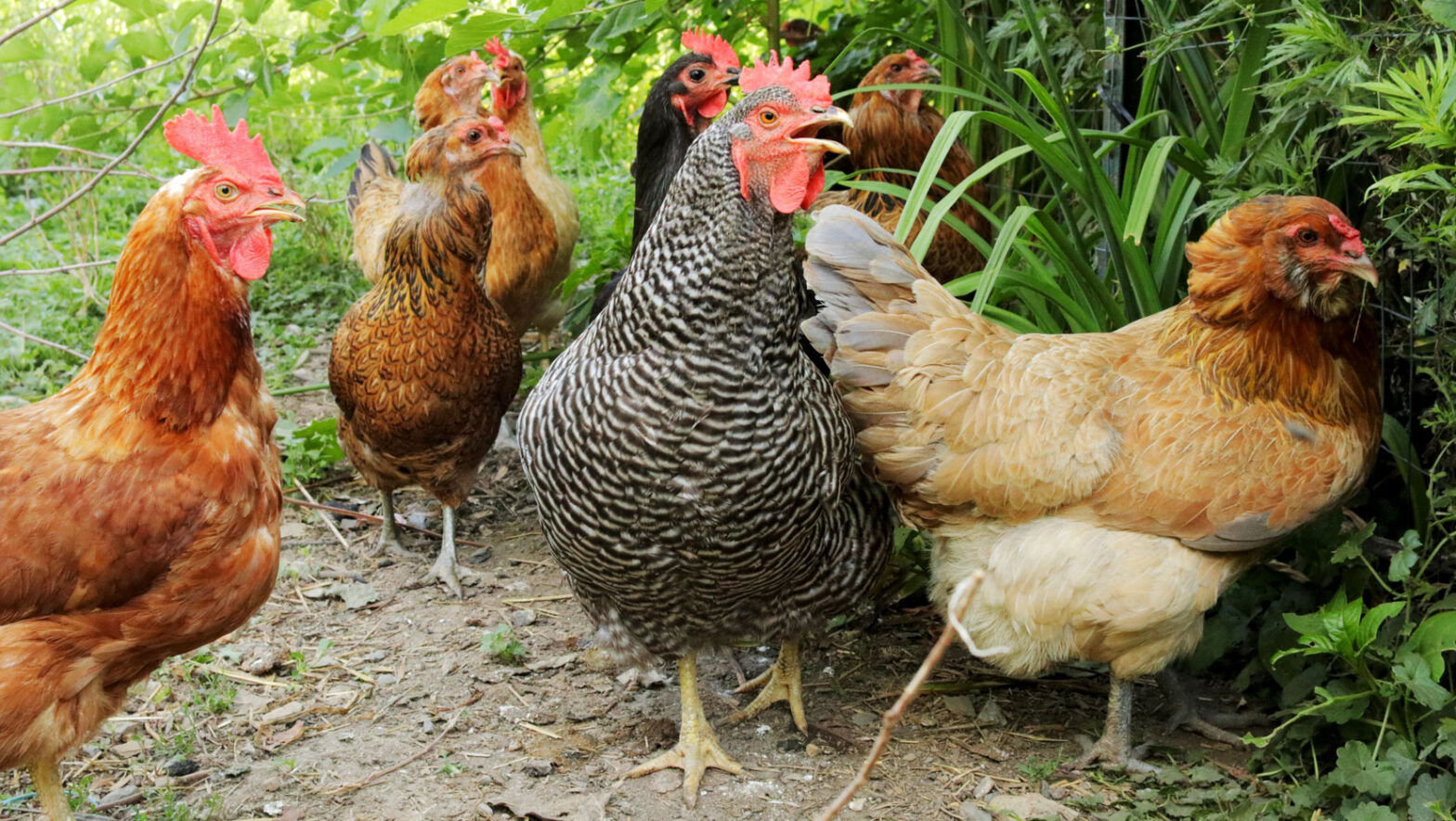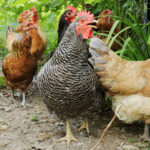
A Complete Guide To Starting a Backyard Poultry Farm
September 4, 2022
Feed Supplements, Organic Agriculture, Organic Solutions, Personal Care
The majority of India’s population resides in rural or backward regions, and there are few opportunities to sustain. Moreover, since people are not educated, every family member is engaged in some activity to earn money and live.
One of the significant sources of livelihood for rural people is backyard poultry farming. However, starting a poultry farm and managing it is not easy. So, if you are thinking of starting a poultry farm in your backyard or want to manage it efficiently, this article will help you.
This article will help you understand essential poultry farm management practices to follow. Additionally, we will cover some of the government initiatives to support backyard poultry farms.
What is backyard poultry farming?
Backyard poultry farming is keeping indigenous poultry animals such as chickens, ducks, geese, etc., in the backyard of a household. Such farming practice is widely common in rural regions and is a lucrative source of supplementary income.
Each household is likely to have several indigenous birds in their backyard for commercial and household purposes. Eggs and meat are consumed in the home while birds are sold in the market since they give higher returns than their produce.
Importance of backyard poultry farming
There are various reasons for starting poultry farming in your backyard. Some of the significant benefits of such poultry farming are discussed below:
- Low level of investments since these poultry farms are started and managed within the household. So, there is no cost for big farms, expensive feed supplements, etc.
- Give higher economic returns due to the demand for poultry in the market.
- Generate employment opportunities for small farmers, including women and unemployed youth.
- Helps in generating side or supplementary income.
- Enhances soil fertility as manure from poultry is nutritious and beneficial for soil nourishment. (10-15 chickens produce 1-1.2 kg of manure/day).
- Poultry households get access to nutritious food sources such as eggs and meat without any additional cost.
How do you construct a suitable shelter for poultry?
Even though backyard poultry farming doesn’t require much input, construing a steady and stable shelter for your poultry is essential. You can create shelter for your birds in the following manner:
- Location and material
Farmers should choose stable, low-cost, and locally available materials for building shelters for poultry. For example, they can use materials such as bamboo, wooden planks, polythene sheets, etc. Moreover, poultry needs a sturdy and safe shelter to keep themselves safe from any virus, bacterial infections, etc. Thus, farmers must keep this in mind while finalizing the material and location of the shelter.
Poultry shelter dimensions Age (Weeks) Floor space (sq. ft) Feeding space (cm) Watering space (cm) 0-4 0.5 2.5 1.5 4-8 1.0 5.0 2.0 8-12 2.0 6.5 2.5 Source: ICRISAT
-
Height and space requirement
Make sure to build the shelter a few inches above the ground to ensure water doesn’t enter during heavy rainfall. In addition, chickens might panic if water gets into the shelters. Thus, always build it above the ground to avoid such situations.Moreover, ensure that shelter is spacious enough for chickens. Lack of adequate space results in overcrowding, creating chaos in the house. Thus, there should be enough space for dwelling and feeding.
-
Ventilation
The supply of fresh air to the poultry animals is essential. There may be a lack of oxygen during brooding due to increased carbon dioxide, ammonia, etc. Hence, you should avoid airtight curtains. Keeping a gap of 3.5 inches between the ceiling and side curtains is recommended to facilitate gas exchange between the house and the environment. -
Drinking facility
Drinker and feeder facilities should be near the shelter – either in front or at the back. Also, ensure that there are nests if the drinker is at the back and must be in the front with nests or baskets at a back corner of the shelter.
Management of backyard poultry farms
Now that you have built a poultry farm, you need to manage it for better returns. Failing to do so can be detrimental to a bird’s health and also impact your livelihood. Thus, to avoid such a situation, you can follow these management practices:
1. Shelter building
While building a shelter, make sure it ticks all the following requirements:
- Provide security during the extreme climatic conditions
- Protects from predators
- Spacious to enable movement
- Adequate ventilation and lighting
- Maintain hygiene and sanitization
- Helps in converting poultry litter into manure
2. Feed management
Giving adequate feed during different phases of growth can help poultry to live longer and reproduce more. Follow these practices for feed management:
| Feed based on growth stages | Feed type |
| Initial six weeks | Should be reared on standard chick starter ration under nursery rearing or brooding |
| Second growth stage | Provide natural food or greens like waste grains, germinated seeds, mulberry leaves, Azolla, drumstick leaves, and sub-label leaves (high protein sources). |
| Six months of age (age of sexual maturity in layers) | Restrict feed to control the weight of the birds. |
| Laying Phase | Supplemental calcium sources like limestone powder, stone grit, and shell grit at 4-5 gms per bird daily |
| Feed based on growth stages | |
| Dry season | Household waste (kitchen leftovers) and oilseed cakes |
| Rainy Season | Worms, insects, and post-harvest leftovers |
Source: ICRISAT
3. Fresh drinking water
Ensure that you are giving adequate water to the poultry by following these practices:
- Provide access to fresh, clean, and cool water throughout the day.
- A bird can quickly drink twice as much water as its weight as it eats feed. So, to ensure birds are getting adequate water, you can build hanging or floor-based waterers near them.
- The birds will cease producing eggs if they do not get adequate water for two days. Due to this, the bird’s physiology is on complete rest; thus, do not indulge in egg-laying. Hence, to avoid such issues, provide them water at the right time in the correct quantity.
4. Breeding management
Keep these practices in mind for better breeding management:
- A rooster can service six to eight hens to obtain fertile eggs.
- Collect fertile eggs from the nest regularly and store them in a relaxed and well-ventilated place. For higher hatchability, you can place 10-12 eggs under a brooding hen within two weeks of egg collection.
- Rural hatcheries can be set up using a community-based approach for improved hatchability under field conditions.
4. Health care
The health of the poultry is of paramount importance. A healthy chicken produces healthy eggs and keeps the poultry farm away from any harmful infections. Follow these best practices for health care of your poultry:
- Provide proper and timely vaccination against Marek’s disease, Newcastle disease (Ranikhet disease), fowl pox, etc.
- Ensure regular deworming of birds to protect them from internal parasites.
- Follow the instructions of veterinarians and manufacturers to avoid health hazards.
- Avoid rearing different species of poultry together (chicken with ducks, turkeys, etc.).
- Maintain proper hygiene and sanitization in the poultry houses. Clean the house regularly and dispose of dead birds appropriately.
- Implement biosecurity if feasible and affordable since it keeps the infections away and ensures good quality production.
While medicating via drinking water, follow the veterinarian’s instruction on the amount of medicine mixed in the water that chicks typically consume in four hours (approximately 6 liters for 100 birds per day, at six weeks).
Debeaking and deworming schedule
| 31-42 days | First debeaking |
| 42-50 days | First deworming (may be done earlier if worms are noticed) |
| 13-16 weeks | Second debeaking and second deworming |
| Continue deworming once in three months or as per requirement | |
Recommended vaccination schedule for backyard poultry
| Newcastle disease | On days 5-7 Strain: Lasota Dosage: One drop Route: Eye drop |
| Infectious Bursal disease | At day 14 Strain: Georgia Dosage: One drop Route: Oral drop |
| Pox | At day 21 Strain: Fowl pox Dosage: 0.20 ml Route: Subcutaneous injection |
| Newcastle disease | At day 28 Strain: Lasota Dosage: One drop Route: Eye drop |
| Newcastle disease* | At week 9 Strain: R2B Dosage: 0.5 ml Route: Subcutaneous injection (to be repeated at six-month intervals or as per requirement) |
| Pox* | At week 12 Strain: Fowl pox Dosage: 0.20 ml Route: Subcutaneous injection (to be repeated at six-month intervals or as per requirement) |
Source: ICRISAT
6. Monitoring/record keeping
Over time, you may shelter several birds, and it becomes difficult to monitor each bird appropriately. However, you can follow these practices for better record keeping:
- Track each hen’s egg-laying capacity and hatching performance. It will help you choose the best fertile hens for future production.
- Keep a record of your finances – expenses, production, and sales will help you generate insights about economic returns from backyard poultry farming.
- Maintain proper records for vaccination and deworming on each bird. It will help you reduce the costs of unnecessary vaccinations.
Role of Indian Government to boost backyard poultry farms
The government is playing a significant role in increasing backyard poultry farms in rural regions. Under the National livelihood mission, the government has asked states to develop proposals to expand the Rural Backyard Poultry Development program. Under this scheme, 150 birds will be distributed in a focused manner in five or six villages to boost entrepreneurial activity. Moreover, every state has a program to support poultry farmers in their respective areas.



